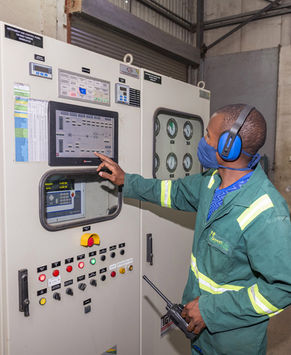
The Journey to Renewable Fuel
Ethanol in Zimbabwe
Ethanol has been produced in Zimbabwe for over 40 years, for both alcohol and transportation fuel purposes and our local fuel contained ethanol blends of between 10-25% from the 70’s up until the late 90’s. This blending was introduced to alleviate fuel shortages and high petrol prices and production only ceased due to drought in Lowveld and a crash in the international oil price. All cars in the county during this 20 year period ran on an ethanol blend of up to 25%.
Ethanol and Cars

Ethanol plays a vital role in modern vehicles, primarily as a blend with petrol. This biofuel enhances the fuel's octane rating, leading to improved engine performance and reduced knocking. Ethanol's high oxygen content promotes more complete combustion, reducing harmful tailpipe emissions and resulting in lower greenhouse gas emissions compared to pure petrol, contributing to cleaner air and a smaller carbon footprint.
Compatible with vehicles in blends up to 20% (E20), and usable in higher concentrations in flex-fuel vehicles (FFVs), ethanol offers a readily available and increasingly sustainable way to power transportation.
The ethanol during this time was hydrous, containing between 4% and 7% water. This is unlike the current ethanol, which is anhydrous and has a purity level of 99.6%. Water-free ethanol is superior for blending purposes and Green Fuel’s anhydrous ethanol is in line with the ‘fuel grade’ approved for use in Europe and US (to EU standards, specifications EN 15376 and CWA (EN) 15293)

Other Ethanol Uses
Beyond transportation, ethanol finds applications in various industries, including as a solvent, a key ingredient in many consumer products like hand sanitizers and cosmetics, and as a feedstock for producing other valuable chemicals. Its biodegradability and production from renewable sources make it a promising component of a more sustainable future.
A Sustainable
Zero-Waste Process
Sustainable ethanol processing, generates its own electricity and creates high-quality cattle feed, contributing to both energy and agricultural sectors.

Ethanol By Products
Electricity
Bagasse is burned in our environmentally friendly boiler which powers our entire factory and produces excess electricity.
Electricity Production
The Green Fuel factory reuses all byproducts, burning bagasse in the environmentally friendly boiler to produce green, renewable electricity. The boiler produces 120 tonnes of steam per hour at 45 bar of pressure, powering the factory and producing excess electricity.
Green Fuel can currently generate up to 18 megawatts of electricity for its own consumption, with excess being exported into the National Grid, making it completely energy self-sufficient and contributing to alleviating the national power deficit. The factory has capacity to increase to 50 megawatts in the future.


Cattle Feed
Green Fuel is committed to sustainable agriculture and, as such, endeavours to utilize all of its byproducts. One such project focuses on the production of cattle feed from sugar cane trash, as well as highly nutritious compressed feed made out of sugarcane bagasse, the dry residue left over after the extraction of juice from the sugarcane. The bagasse is hydrolysed to break down cellulose and make it easier to digest, providing a reliable source of cattle feed in an area prone to drought.
A high protein yeast recovery plant enhances the nutritional quality of sugarcane bagasse converting it into protein-enriched feed.
In addition to this, a feedlot for over 10,000 head of cattle is under construction within the Green Fuel Estate, as well as an abattoir, food mix and pelletizer plant, ensuring that no byproducts of the ethanol production go to waste. Community outreach programs have been developed to assist local farmers with livestock nutrition during periods of drought, significantly contributing to community well-being.






